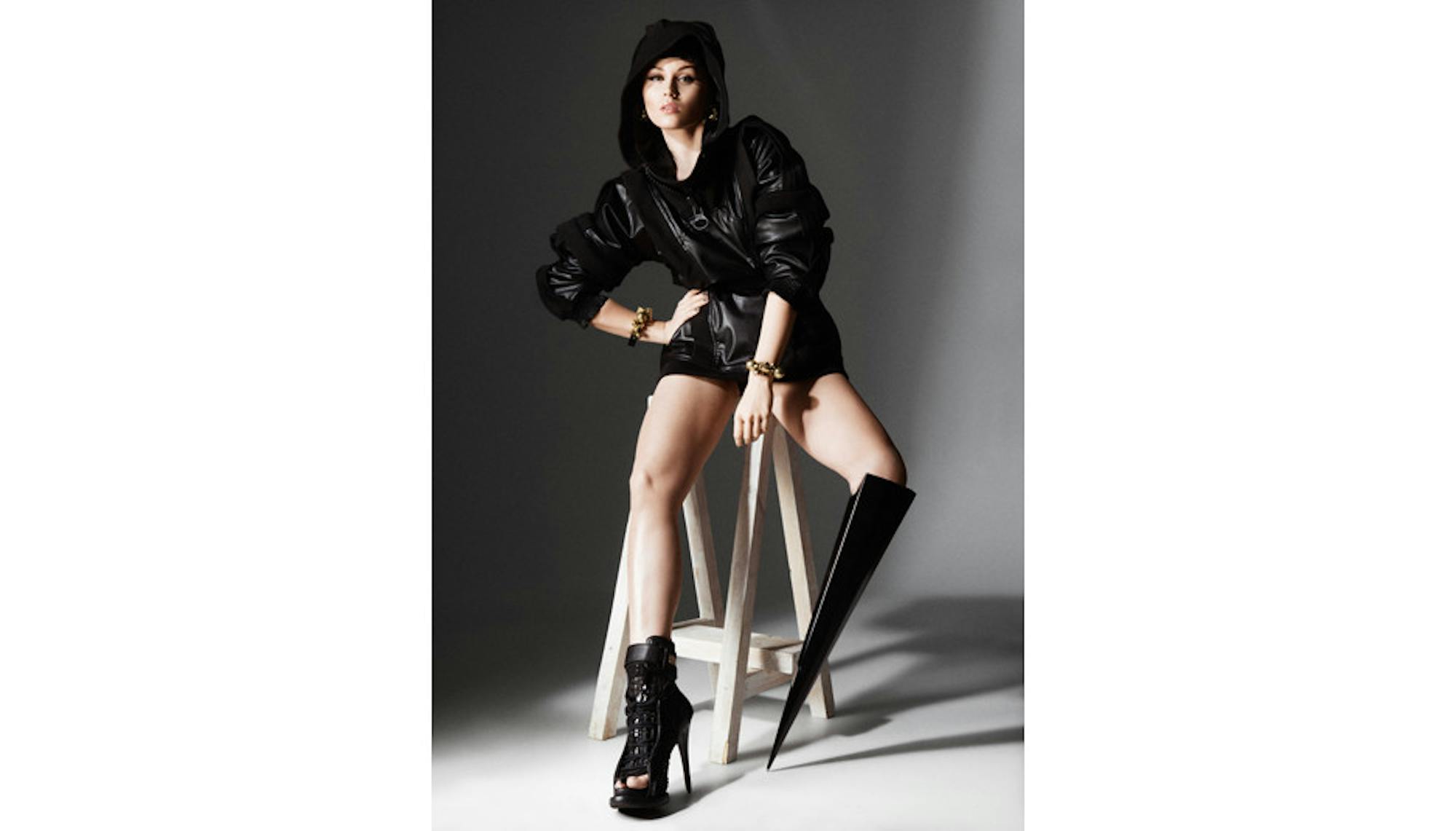On March 6, the Museum of Fine Arts, Boston (MFA) debuted #techstyle, an innovative fashion and technology exhibition featuring pieces by international designers including Iris Van Herpen, Viktor & Rolf, Alexander McQueen and Mary Katrantzou. The exhibition, which will run until July 10, focuses on the intersections of style and engineering in light of increasing Internet connectivity and emerging technologies.
The new exhibition is housed in the Henry and Lois Foster Gallery, the MFA's main area for special exhibitions of contemporary art. The space is structured something like a stretched hourglass, with two spacious exhibition rooms connected by a narrow hallway. The flow of visitor traffic gets caught in this hallway, as museumgoers stop to pore over the McQueens and other pieces mounted to the long wall behind glass. In the second main room, gray pyramidal step bases surround or uplift most of the garments, which contribute to the architectural aesthetic of the exhibition but seriously impede movement around the gallery, particularly on a day as crowded as that of its debut.
The darkened, twisting and narrow entrance to the exhibition at the end of one of the main rooms is also used to create intrigue more than accessibility, as Saam Farahmand’s “Prototype” (2014) videoloop on a massive screen that catches visitors and creates a bottleneck. In the video, a masked woman dances under an eerie red light,performing something like a deliberate and menacing ballet. The sound of metal scraping on glass is punctuated by sharp cracks as the dancer wields what appears to be a massive black spike in place of her lower right leg.
The video itself is so captivating that it can be easy to miss the actual star of the show: “The Spike” artificial leg (2015), the silicone composite bionicprosthesis worn and designed by the dancer in the video, English pop performance artist Viktoria Modesta.With its lacquered black finish, the wearable tech nearly disappears into the darkness of the gallery’s walls, until one passes by and catches the glint of the metal at its knife-sharp point. Although both beautiful and menacing, the piece was designed in partnership with The Alternative Limb Project and Ability Matter to functionally serve amputees such as Modesta.
According to the piece’s accompanying placard, “[Modesta] has embraced what many consider a disability and turned it into an alternative idea of beauty” in her creation of the artistic bionic prosthetic. In this way, “The Spike” speaks to the essence of #techstyle, combining advanced engineering and high-tech functionality with slick aesthetics that push boundaries related to notions of beauty and the body. It’s a bold, if traffic-generating, introduction to the exhibition and its concepts.
As visitors push through the bottleneck and into the gallery’s main rooms, they encounter lone-standing fashion pieces — predominantly dresses but also bodysuits, shoes and menswear — scattered throughout the space. Many pieces are paired with accompanying videos projected onto neighboring walls, either conceptual works like “Prototype” or film of the runway shows where they premiered.
One of the most powerful videos in the exhibition is of the “Possessed Dress” (2015), a synthetic knit embedded with robotics from designer Hussein Chalayan. Although the dress itself sits in the gallery, the essential movement of the piece is only captured in the video pairing of a performance called “Gravity Fatigue” that premiered in London this fall.
As a performer standing on stage in a strapless red empire dress begins to dance, something within the garment’s fabric begins to twist around her body, as though a snake is constricting her, or as though her organs have developed a life of their own. Is she controlling the dress’ movements, or are they controlling her? The effect of the question on the spectator is hypnotizing and deeply unsettling, akin to the body horror of film directors like David Cronenberg and David Lynch. According to Chalayan, the garment represents “the innate powers a dress can have…to influence and re-appropriate the behavior of its wearer.” For others visiting the gallery, the dress evoked pregnancy and the anxiety surrounding women’s changing bodies.
Although many of the conceptual pieces like Chalayan’s successfully balance the art and engineering at the heart of the exhibition, others forgo one in favor of the other, such as the “MFA dress” (2015) commissioned by CuteCircuit that allows visitors to #tweetthedress and then watch as their tweet scrolls across the garment’s 10,000 MicroLEDs. The black silk frock may be a feat of engineering, but the resulting fashion, with crystal chains running down a shapeless dress that is covered in pixels of trending topics, is anything but chic or artistically sophisticated.

Many of the more accessible and conventionally appealing works are interesting experiments in tech-driven textiles, with laser-cut leather and 3D-printed polymers featured prominently. This includes the work of Chinese-Canadian designer Ying Gao from his “sound-activated” line “Incertitudes ensemble” (2013): a shirt and shorts set constructed from PDVF(polyvinylidene fluoride), robotics and metal pins. The ensemble recalls the pin and needle-laden garments featured in the Metropolitan Museum of Art’s Spring 2013 Costume Institute exhibition, “Punk: Chaos to Couture,” but with a high-tech spin.
In a space limited in size and accessibility, the exhibition manages to work wonders with designs from veteran creators and newcomers alike, all of whom are looking towards the future of fashion and at its inextricable ties with technology. Although some designs fall short of expectations set by artists like Van Herpen and Chalayan, the majority create a strong and cohesive case for #techstyle.






